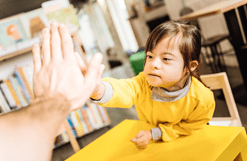
While disabilities can appear in many forms, it is no surprise that disabilities affect people in different ways. Though some disabilities are hidden, many types of disabilities can affect a person’s vision, hearing, thinking, learning, remembering, mobility, social relationships and their mental health.
According to Disabled World (2019), a disability is a condition or a function that is considered to be significantly impaired relative to the usual standard of an individual or group.
There are eight main types of disabilities that can reduce a person’s ability to carry out his or her day-to-day activities.
Eight Main Types of Disability:
- Mobility and Physical Impairments
- Spinal Cord Disability
- Head Injuries (TBI) – Brain Disability
- Vision Disability
- Hearing Disability
- Cognitive or Learning Disabilities
- Psychological Disorders
- Invisible Disabilities
The Pew Research Center states that the most common types of disability involve difficulties with walking or independent living. Many people with physical and mental disabilities have so many difficult challenges to overcome daily. In 2015, more than 20 million people ages 18 and older in the United States reported having serious difficulty walking or climbing stairs and 14 million people ages 18 and older reported to having a difficult time doing errands alone due to physical, mental or emotional conditions (Bialik & Bialik, 2017). The need for a disability awareness day is more crucial than ever before because it is teaching people to recognize the importance of acceptance and will hopefully help to break the stereotypes and overcome misconceptions that are associated with people with disabilities.
The Importance of Disability Awareness Day
Disability Awareness Day (“DAD”) is the world’s largest ‘not for profit’ voluntary-led disability exhibition. The goal for this day: July 14th, is to encourage others to gain a better understanding of people affected by a disability. Another goal for the day is to raise awareness about the benefits of integrating people with disabilities into every part of life, from economic and political life to social and cultural life. On this day, many countries worldwide are hosting events to help foster discussions, specifically forums and campaigns related to disabilities. Guests can also expect to attend informative meetings and exciting performances in their local area.
This year on July 14th, New York City is hosting its fifth annual Disability Pride NYC Parade from 10am-3pm. The theme for the parade is creativity and everyone is encouraged to participate. The parade will feature community floats, costumes, decorated wheelchairs, creative hairstyles, umbrellas and t-shirts. Awards will also be given out to the participants with the most creative ideas.
Taking part in awareness activities and events like the Disability Pride Parade is one way of promoting awareness and breaking down the stigma of disabilities. Another way is by educating yourself about the rights, dignity and the welfare of people with disabilities. According to Henige (2016), there is a preconception in our society regarding disabilities. When it comes to the topic of disability, some people may feel fear, discomfort, or may even avoid talking about it all together. Even though it’s great to promote the cause on Disability Awareness Day, it would be great if disability awareness was promoted year-round so that people would feel more comfortable addressing the issue. Additionally, the year-round promotion would also help to reshape the attitudes of people with disabilities to make them feel more included within society.
WFCF and Its Commitment to Disability Awareness
The promotion of disability awareness is at the heart of the World Forgotten Children Foundation (WFCF)’s mission. Recently, WFCF funded US$ 5,731 to the Imani Project in the rural areas of Kenya to purchase custom wheelchairs and other apparatus for children with severe cognitive and physical disabilities. Back in 2017, WFCF supported the African Community Project by funding the organization with US$ 250 to purchase a stretcher for the Luyaba Primary School in Zimba District which is used to carry children experiencing epileptic seizures to a sick room for observation. WFCF has also provided a helping hand by funding US$ 1,490 for the purchase of five wheelchairs and eight sets of assorted crutches for the children of the Zimba Community Forest who suffer from physical impairments that force them to crawl, hobble or to be carried around. The equipment gave the children increased mobility and a new outlook on life.
For more information about WFCF’s funded projects that help to promote disability awareness, please visit: https://www.worldforgottenchildren.org/projects.
Additionally, please be sure to stay connected with us on all of WFCF’s social media channels (Facebook, Twitter, and LinkedIn pages) for more information about various funded projects, donations, and interviews with notable non-profit organizations. Don’t forget to sign up to receive more information about WFCF directly to your inbox here: http://ow.ly/gUdh50uHHJ4.
Sources:
Bialik, K., & Bialik, K. (2017, July 27). 7 facts about Americans with disabilities. Retrieved from https://www.pewresearch.org/fact-tank/2017/07/27/7-facts-about-americans-with-disabilities/
Disabled World. (2019, March 27). Disabilities: Definition, Types and Models of Disability. Retrieved from https://www.disabled-world.com/disability/types/
Henige, A. (2016, February 08). The Importance of Disability Awareness and Getting Involved. Retrieved from http://www.globalliftcorp.com/the-importance-of-disability-awareness-and-getting-involved/
Disability Awareness Day. Retrieved from: https://www.disabilityawarenessday.org.uk/
Pride, W. B. (n.d.). Disability Pride New York City. Retrieved from http://disabilitypridenyc.org/


